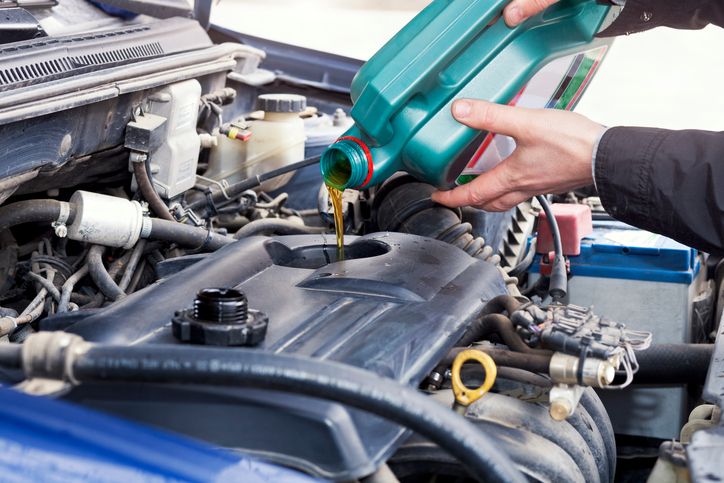Keeping the right amount of fluid in your car is important for keeping it running smoothly and making it last as long as possible. Checking the fluids in your car yourself is a simple job that can be done regularly to keep it running well. This piece will talk about why regular fluid checks are important, the different types of fluids to check, how to do your own fluid checks, how to top up your fluids, common mistakes to avoid, how often to do fluid checks, and the benefits of regular fluid maintenance.
Why regular fluid checks are important
Checking the fluids in your car on a regular basis is important to keep it in good shape. Different fluids in a car are very important for many of its functions. These include engine oil, gearbox fluid, cooling, brake fluid, power steering fluid and windscreen washer fluid. By keeping an eye on these fluids, you can keep your car running easily, avoid expensive repairs, and drive safer.
Different Kinds of Fluids to Check
- Engine oil keeps engine parts from getting too hot and lubricates them.
- Transmission fluid makes shifting gears smooth and protects the parts of the transmission.
- Coolant controls the engine’s temperature and keeps it from getting too hot.
- Brake fluid moves the force from the brake pedal to the brakes so that the car can stop.
- Power steering fluid makes it easy to move the steering wheel.
- Fluid for the windscreen washer: Keeps the windscreen clean so you can see clearly.
How to Check Fluids Yourself
Doing your own fluid checks is easy and doesn’t require many tools. Here are the steps:
- Get the Tools You Need: You’ll need a clean rag and the owner’s instructions to help you.
- Find the fluid reservoirs: Find the places under the hood where each fluid is stored.
- Check the level of fluid: Check the fluid level with dipsticks or level marks on the reservoir.
- Look for leaks or contamination: Look for strange colours or smells that could mean there are leaks or contaminated fluids.
Signs of Trouble with Fluids
Knowing the signs of fluid problems can help you take care of them quickly:
- Engine overheating: This means there isn’t enough water or the cooling system isn’t working right.
- If the gearbox slips, it means that the oil level is too low or there are problems with the gearbox.
- Brake Failure: This can happen if there isn’t enough brake oil or if something is wrong with the brake system.
- Trouble Steering: This could be because the power steering fluid level is too low or there are problems with the steering system.
How to Fill Up on Fluids Yourself
If you check the fluid levels and find that they are low, do these things to bring them back up:
- Engine Oil Top-Off: Use a funnel to add the right kind and amount of oil.
- Adding more gearbox fluid: Pour the fluid into the proper container.
- Coolant Refill: Fill up the radiator or reservoir with coolant until it hits the right level.
- Adding Brake Fluid: Fill up the brake fluid tank with brake fluid.
- Power Steering Fluid Refill: Put the right amount of fluid into the power steering tank.
- Refilling Windscreen Washer Fluid: Pour windscreen washer fluid into the right tank.
What Not to Do: Common Mistakes
- Not checking the fluids regularly.
- Using the wrong kinds of fluids.
- Filling up pools too much.
- Ignoring leaks or signs of contamination in the fluid.
- Skipping steps to add more fluids when they are needed.
How Often Fluid Checks
At least once a month or before big trips, you should check your car’s fluids. Also, check the fluid levels if you see any danger lights or alerts on the dashboard.
Pros of Performing Regular Fluid Maintenance
Regular maintenance on fluids has many perks, such as:
- Better performance and fuel economy for the car.
- Keeps expensive fixes and breakdowns from happening.
- Parts of the engine and gearbox last longer.
- Added safety to the road.
In conclusion
Doing your own oil checks on a regular basis is important for keeping your car safe, running well, and lasting a long time. You can make sure that your car runs smoothly and efficiently for years to come by following these easy steps and tips.
FAQs
How often should I check the fluids in my car?
Check the fluids in your car at least once a month or before long drives.
What kind of engine oil can I use to top it off?
The type and thickness of engine oil that is suggested can be found in your owner’s manual.
Is it safe to drive if the gearbox oil level is low?
If you drive with too little gearbox fluid, it can hurt your gearbox. It’s important to quickly add more fluids.
Now that I’ve found a leak, what should I do?
Take care of leaks right away and, if necessary, talk to a mechanic to stop more damage.
Can I mix different kinds of brake fluid?
Putting together different kinds of brake fluid can make the brakes work less well. Use the type of oil that comes with your car at all times.

